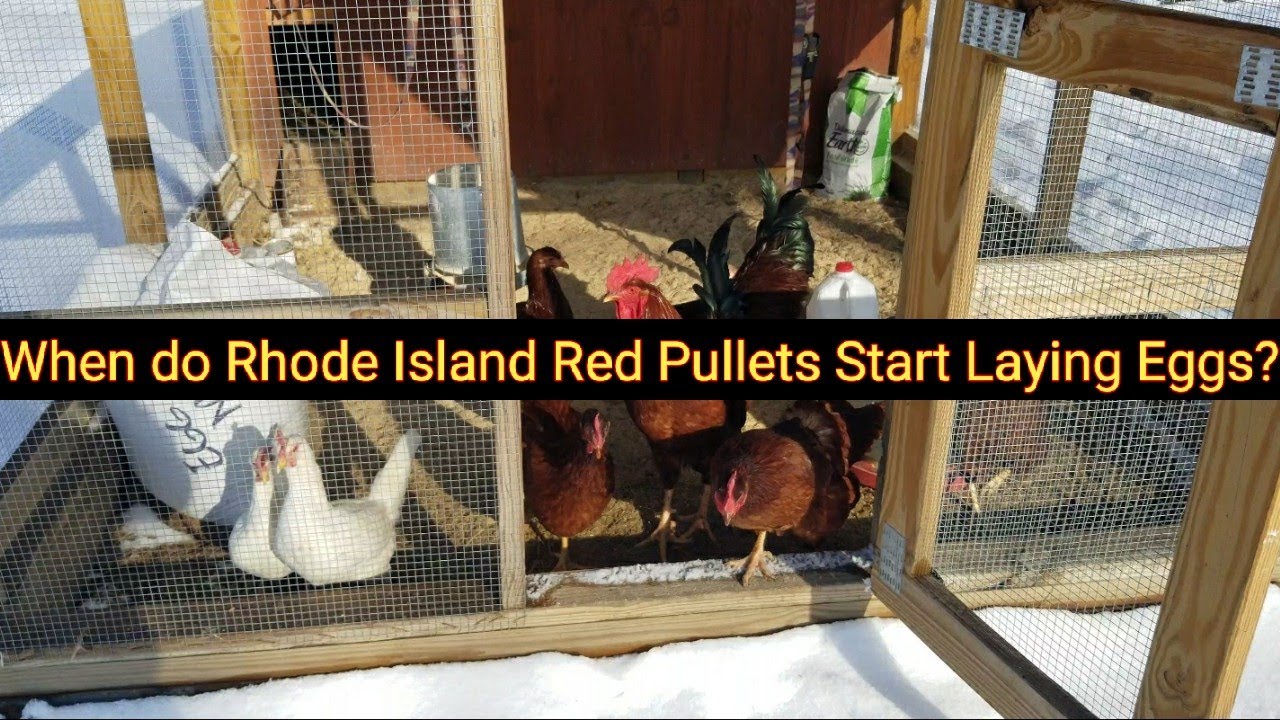Introduction to Rhode Island Red chickens
Rhode Island Red chickens, known for their vibrant red feathers and calm temperament, are a popular breed among backyard chicken enthusiasts. Originating from Rhode Island, USA, these chickens are valued for their ability to lay large brown eggs consistently. Rhode Island Reds are known for their versatility as they thrive in both free-range and confined environments. Understanding the different stages of a Rhode Island Red’s life is crucial to ensure their well-being and maximize their egg-laying potential.
Understanding the different stages of a Rhode Island Red
A Rhode Island Red’s life can be divided into several stages, each marked by distinct changes in their physical and behavioral characteristics. These stages include incubation, brooding, chickhood, pullet stage, and the onset of egg-laying. Each stage requires specific care and attention to ensure the healthy development of the chicken.
The developmental milestones of a Rhode Island Red
During the incubation stage, the Rhode Island Red eggs are kept warm and protected until they hatch. After hatching, the chicks enter the brooding stage, where they are cared for by a heat source until they can regulate their own body temperature. As they grow, they transition into the chickhood stage, where they develop their feathers and learn basic skills from their mother or caretaker.
The pullet stage is a crucial period for Rhode Island Reds as they experience rapid growth and maturation. This stage typically lasts from 16 to 20 weeks, during which the young chickens develop their reproductive systems. It is during this time that the hens begin to prepare for egg-laying.
Physical signs of a Rhode Island Red reaching maturity
When a Rhode Island Red hen is approaching maturity, several physical signs become apparent. The chicken’s comb and wattles, which are fleshy growths on top of their head and under the chin, begin to grow larger and turn bright red. Their pelvic bones, located on either side of the vent, also start to spread apart, allowing for easier egg passage. Additionally, their feathers become more developed and glossy, indicating the onset of egg-laying.
Factors influencing the onset of egg-laying in Rhode Island Reds
Several factors influence when a Rhode Island Red will begin laying eggs. One of the most significant factors is the amount of daylight the chickens are exposed to. As the days become longer, typically in spring and summer, the chickens’ reproductive systems are triggered to start egg production. Other factors include the chicken’s overall health, nutrition, and stress levels.
The age range when Rhode Island Reds typically lay eggs
Rhode Island Reds generally start laying eggs between 5 and 6 months of age, with some variations depending on individual genetics and environmental conditions. It is important to note that not all Rhode Island Reds will lay at the exact same age, as some may start earlier or later than average.
Recognizing behavioral changes in Rhode Island Reds
As Rhode Island Reds approach the egg-laying stage, they may exhibit notable behavioral changes. They may become more vocal, often making unique clucking sounds. They may also spend more time exploring potential nesting spots and looking for privacy. Some hens may even display a broody behavior, sitting in the nest for extended periods without actually laying eggs.
Caring for a Rhode Island Red during the egg-laying stage
Providing proper care during the egg-laying stage is crucial for the health and productivity of Rhode Island Reds. Ensuring clean and comfortable nesting areas, regular egg collection, and maintaining a balanced diet are essential. Regular health checks are also important to detect any potential issues early on and to address them promptly.
Nutritional requirements for Rhode Island Reds in the laying phase
Rhode Island Reds have specific nutritional requirements during the egg-laying stage. A diet high in calcium and protein is essential for healthy egg production. Supplementing their diet with oyster shells or crushed eggshells can aid in calcium intake, promoting strong and robust eggshells. Commercial layer feed, formulated specifically for laying hens, is recommended to fulfill their nutritional needs.
Common challenges in egg-laying for Rhode Island Reds
While Rhode Island Reds are generally reliable layers, there can be challenges associated with egg production. Some common issues include egg binding, soft-shelled or misshapen eggs, and reduced or ceased egg production. These challenges can arise due to nutritional deficiencies, stress, illness, or environmental factors. Prompt veterinary attention and adjusting husbandry practices can help address these challenges effectively.
Maximizing egg production in Rhode Island Reds
To maximize egg production in Rhode Island Reds, several practices can be implemented. Providing a comfortable and stress-free environment, maintaining a consistent lighting schedule, and ensuring a well-balanced diet are essential. Regular cleaning of nesting areas, proper ventilation, and addressing any health concerns promptly can also contribute to optimal egg production.
Conclusion: The journey of a Rhode Island Red to egg-laying
From the early stages of incubation to reaching maturity and beginning egg-laying, the life of a Rhode Island Red chicken is marked by significant milestones. Recognizing the physical and behavioral signs of maturity, understanding the factors influencing egg-laying, and providing appropriate care and nutrition throughout the process are crucial. By maximizing their overall well-being, owners can ensure Rhode Island Reds reach their full egg-laying potential and continue to be a delightful addition to any backyard flock.





